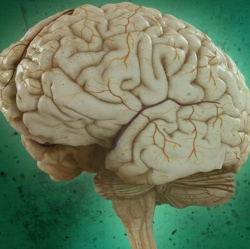
Researchers have uncovered more about the workings of the brain in recent years. Last year, for example, Medical News Today reported that researchers were awarded a Nobel prize for discovering "place cells" and "grid cells" in the brains of rats; cells that act as an "inner GPS."
Word recall tests in human studies have also revealed more information about how the brain stores memories. However, such studies have some shortcomings, according to Sederberg and colleagues.
When it comes to research investigating the inner GPS of rats, the team points out that the environment in which rats reside is small and can be measured in a matter of feet, while word recall tests in humans involve experimental conditions that record only a few minutes of memories.
The Ohio State team says their study addresses these issues; not only did it involve the analysis of real-life memories in humans, but such memories were recorded over longer time periods and distances.
To reach their findings, the researchers enrolled nine women aged 19-26 and supplied them with a smartphone, which they were required to wear on a strap around their neck for 1 month.
Each smartphone included a custom lifeblogging app that took pictures randomly throughout the day. The app recorded an array of information, including each picture’s date, location and whether the wearer was moving at the time it was taken.
At the end of the 1-month study period, participants had their brains scanned using functional magnetic resonance imaging (fMRI) as they were each shown 120 pictures captured by their smartphone. Participants viewed each photo for 8 seconds, during which time they were asked to recall the event shown and try to relive the experience.
Left anterior hippocampus provides a ‘broad picture’ of time and place of memories. Next, the researchers grouped the photographs from each participant into pairs. The images in each pair were taken at least 16 hours and 100 meters apart, and the researchers compared the fMRI data for each image.
Sederberg and colleagues explain that different memories lead to different patterns of brain activity, and that the greater the difference between two memories, the greater the difference in brain activity.
The researchers found that the further apart in time and distance each pair of images were, the greater the difference in activity in the left anterior hippocampus of participants’ brains. Sederberg says such activity did not occur if participants were unable to recall memories.
"We also don’t get this effect if we only asked about the time and not the place of the memory," he adds. "We found that time and space are very much intertwined in our representations of memories."
According to Sederberg, the left anterior hippocampus gives the "broad picture" of where and when memories occur, noting that previous studies have indicated the posterior area of the hippocampus "fine-tunes" the time and place of memories. He adds:
"We found that the hippocampus represents time and space for at least a month of memories spanning up to 30 kilometers (19 miles) in space. It is the first time we’ve been able to study memories on the scale of our lives.
What we found may be just the targeting mechanism that gives us the general gist of the memory. And then there is a process that moves out through the rest of the hippocampus and spreads out through the cortex as we relive the entirety of the memory."
